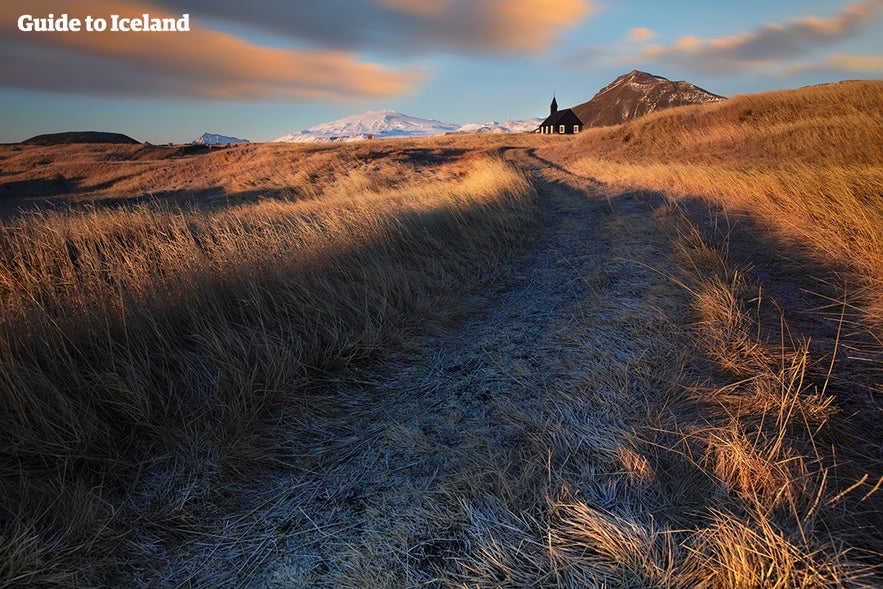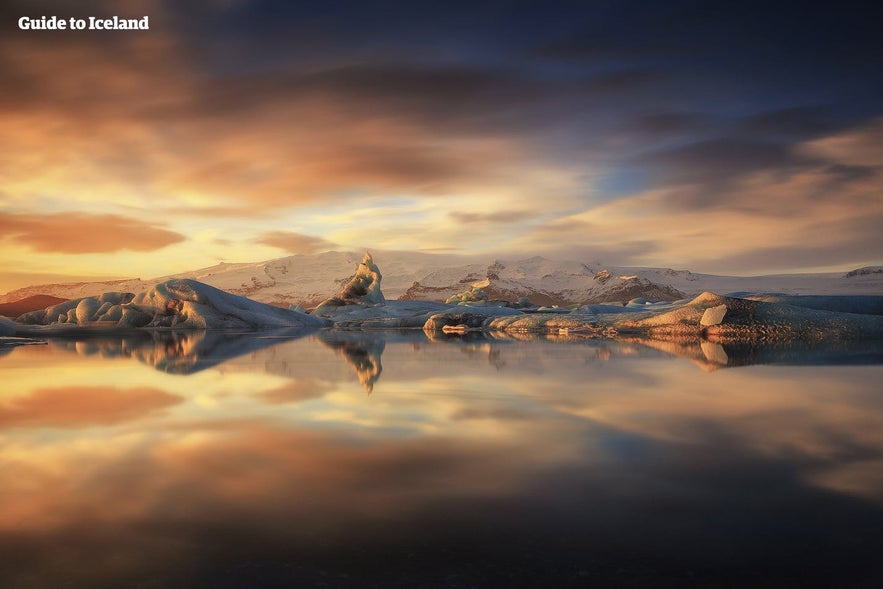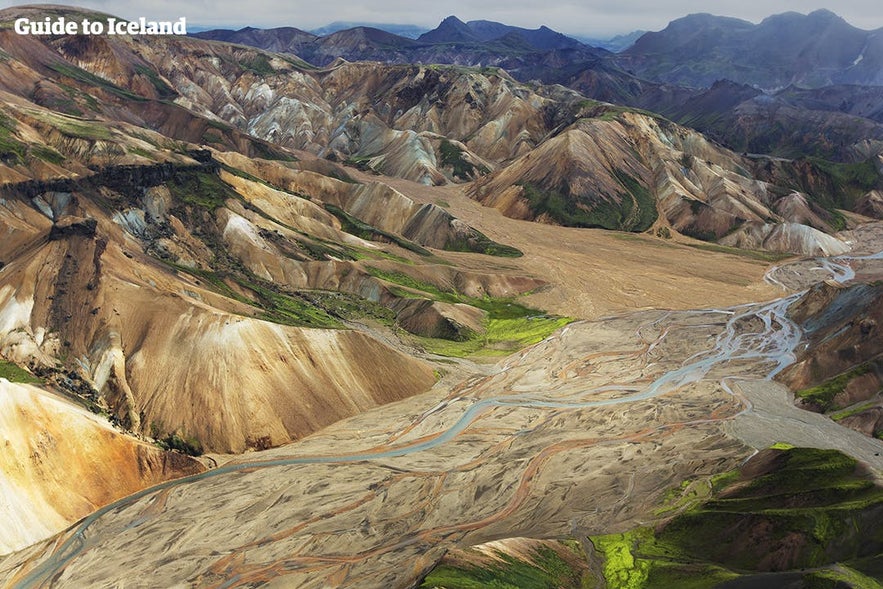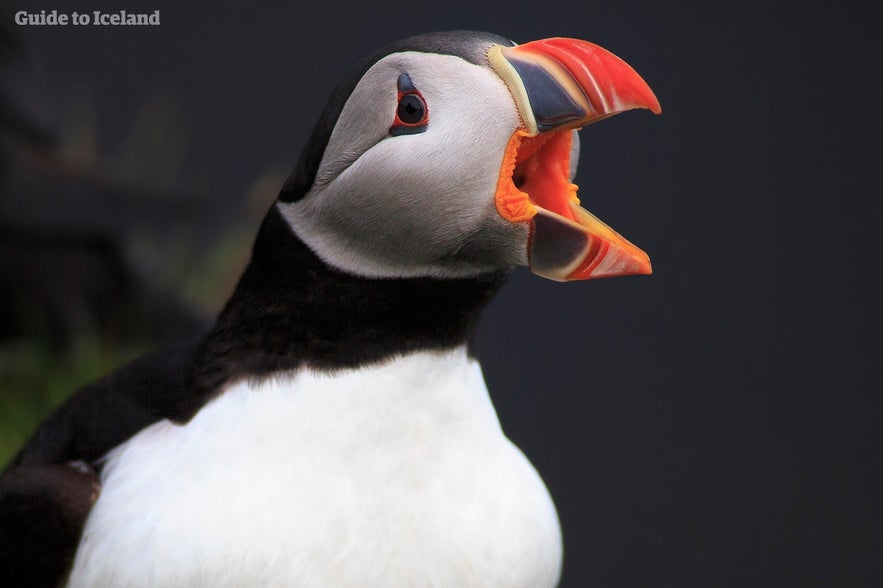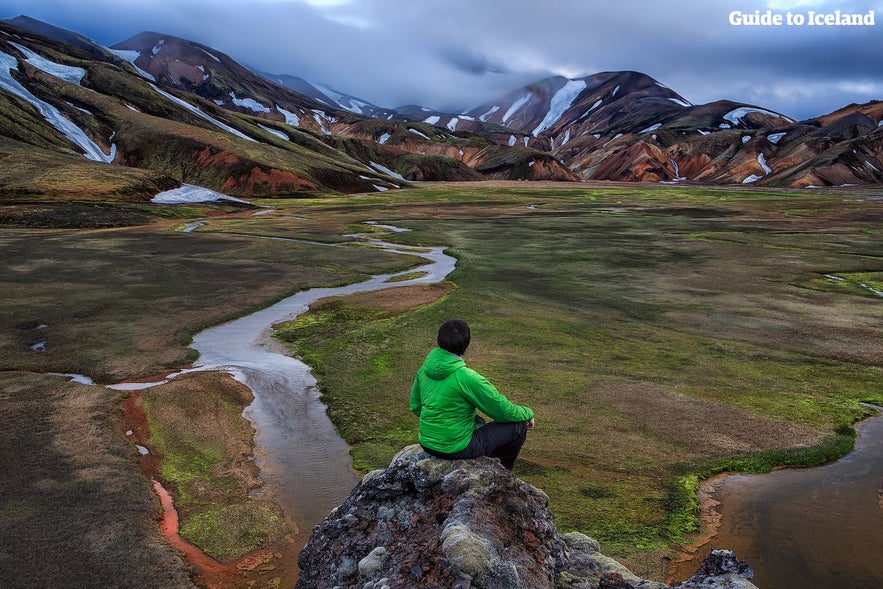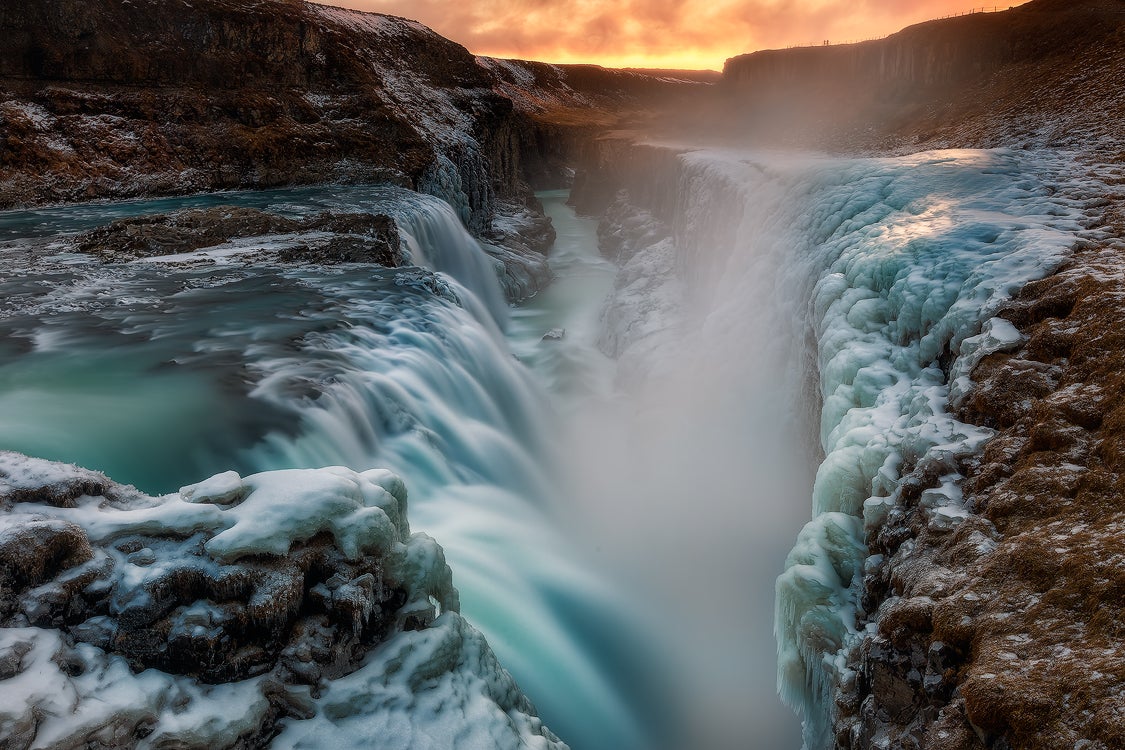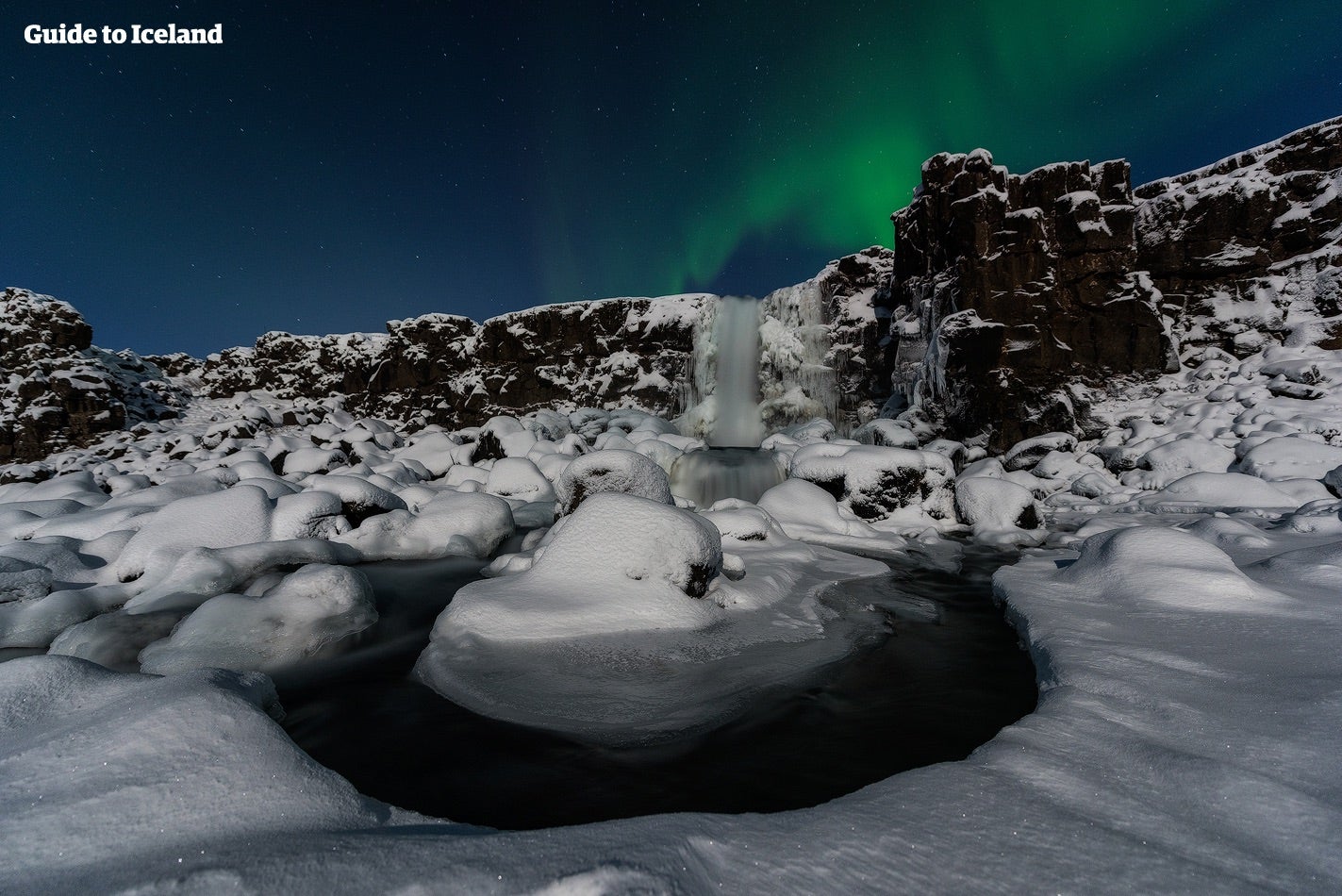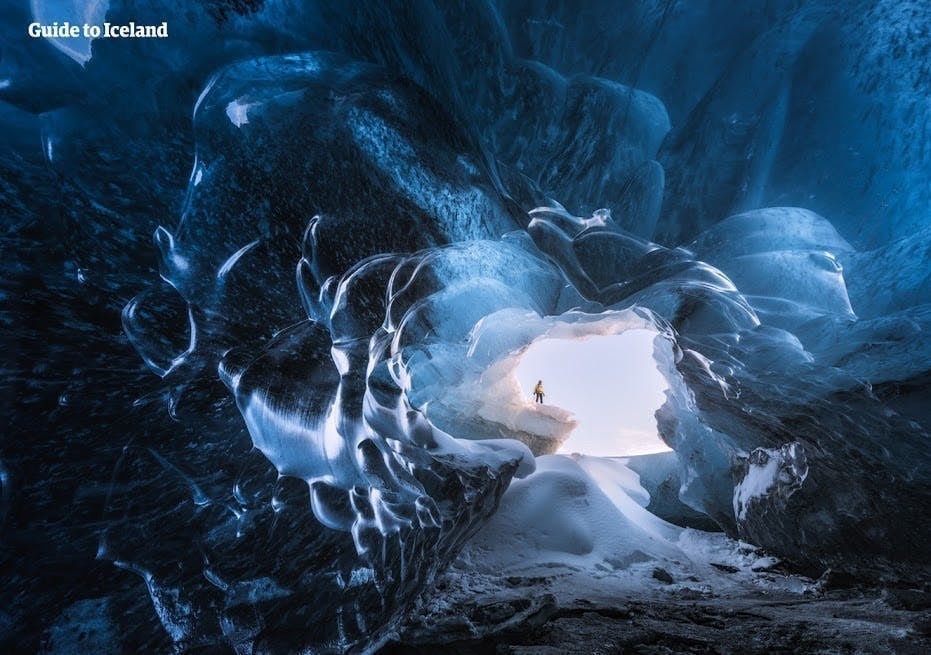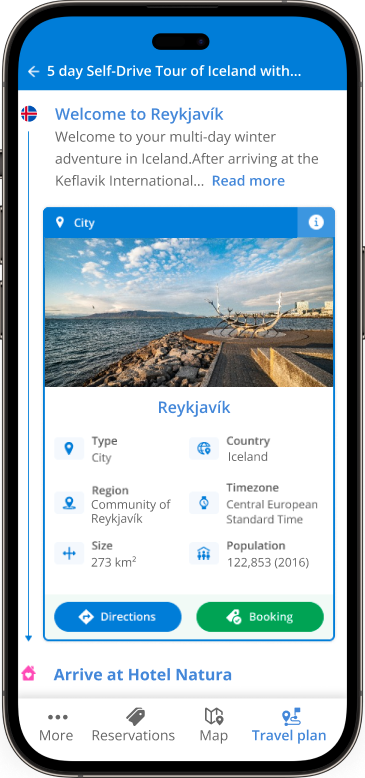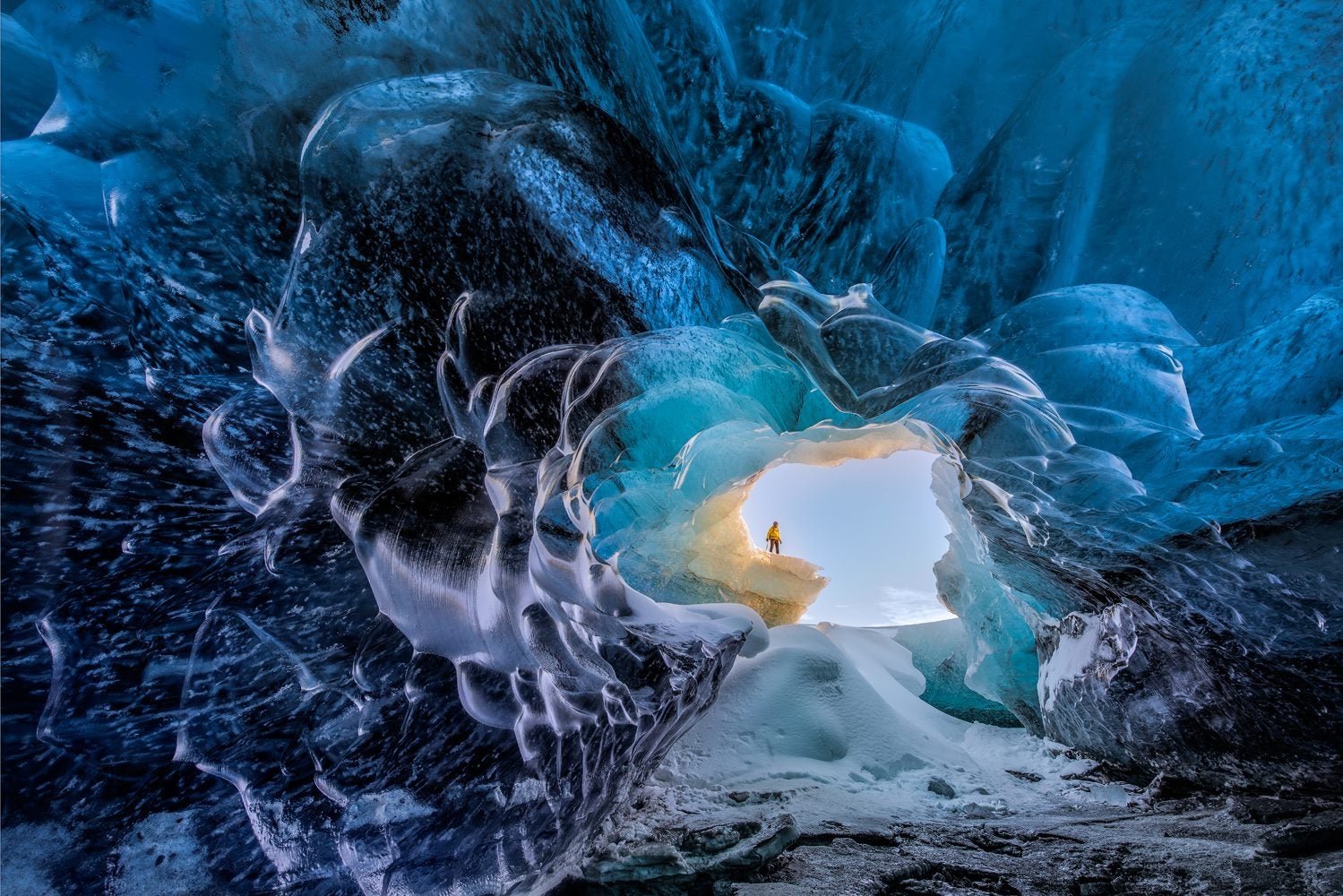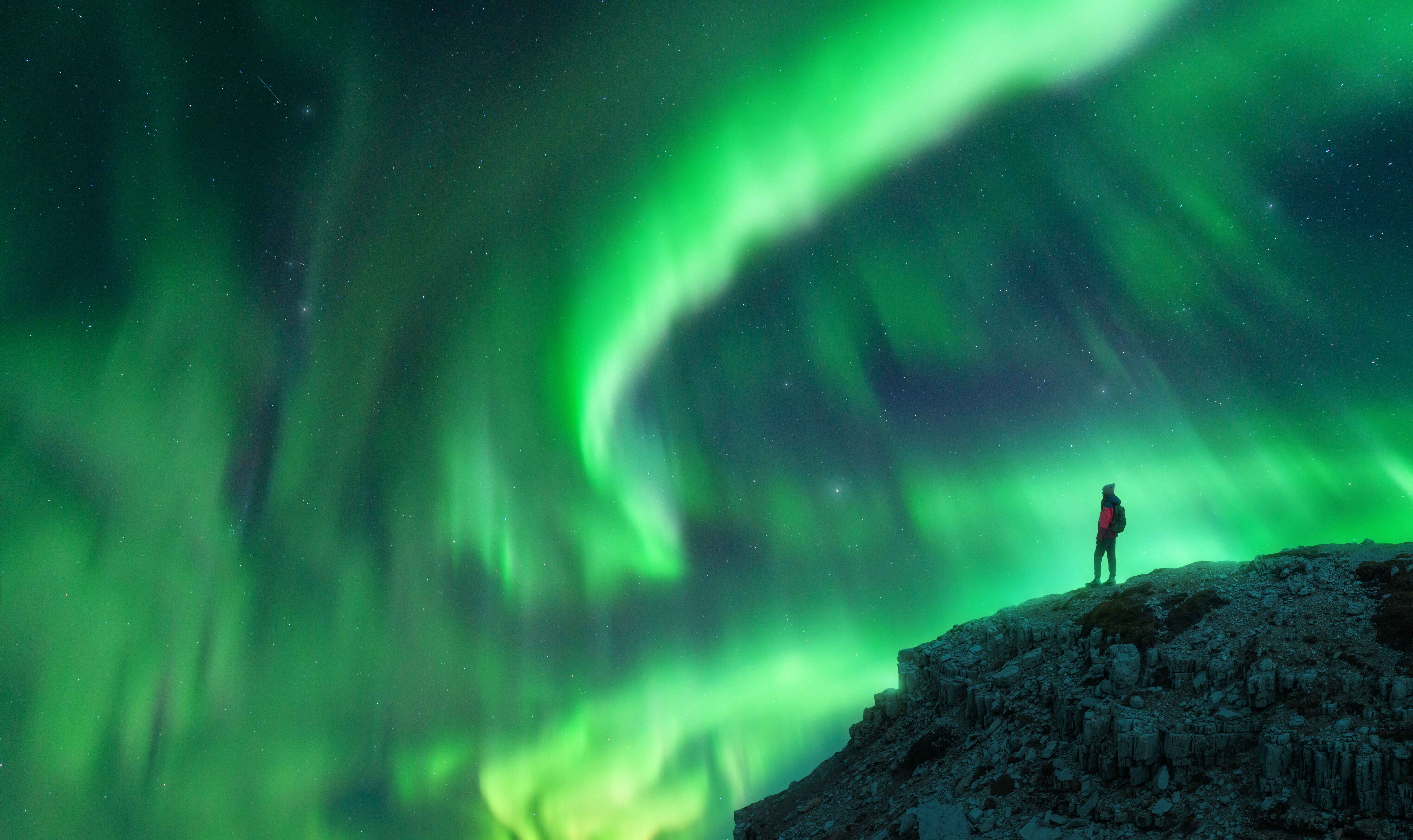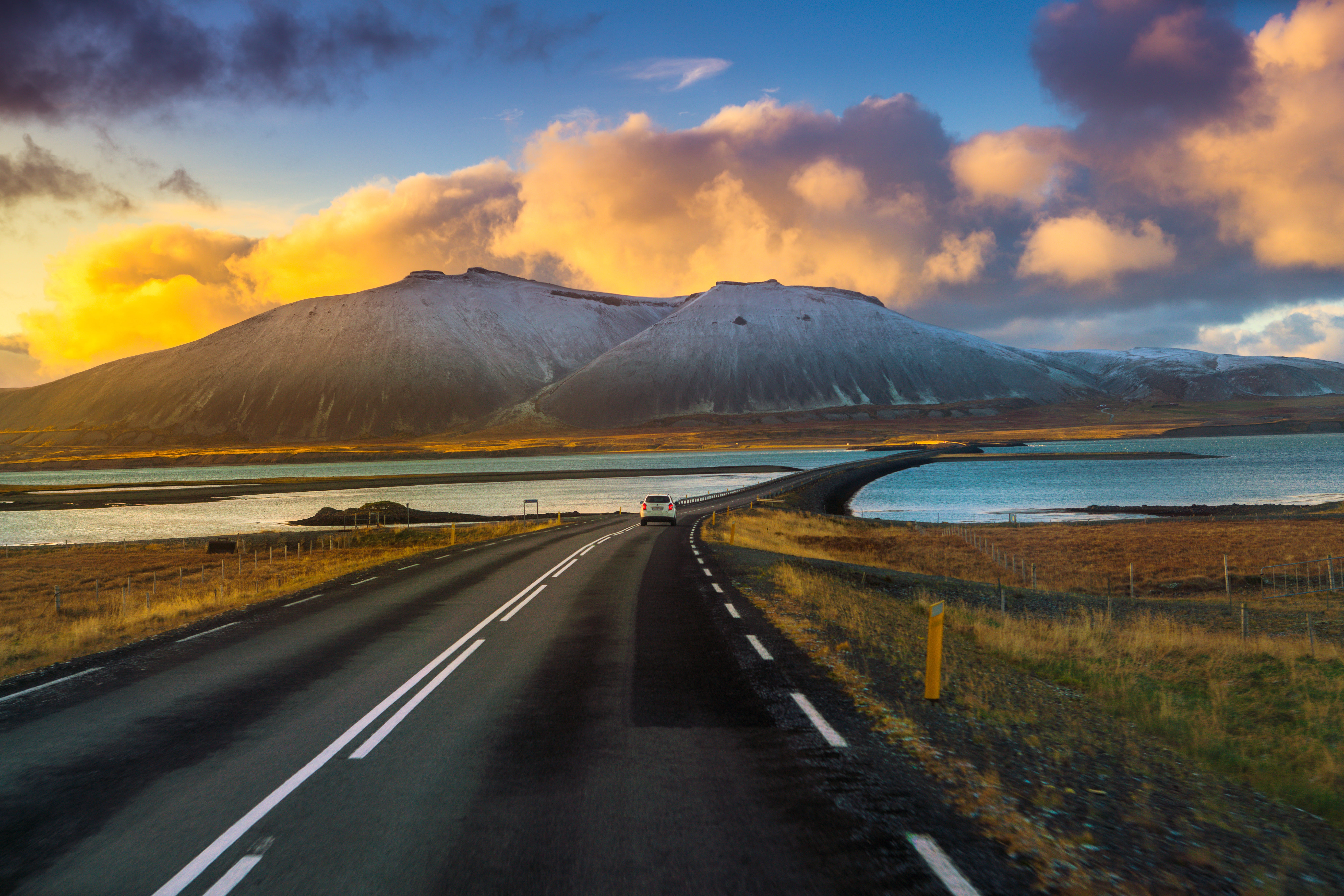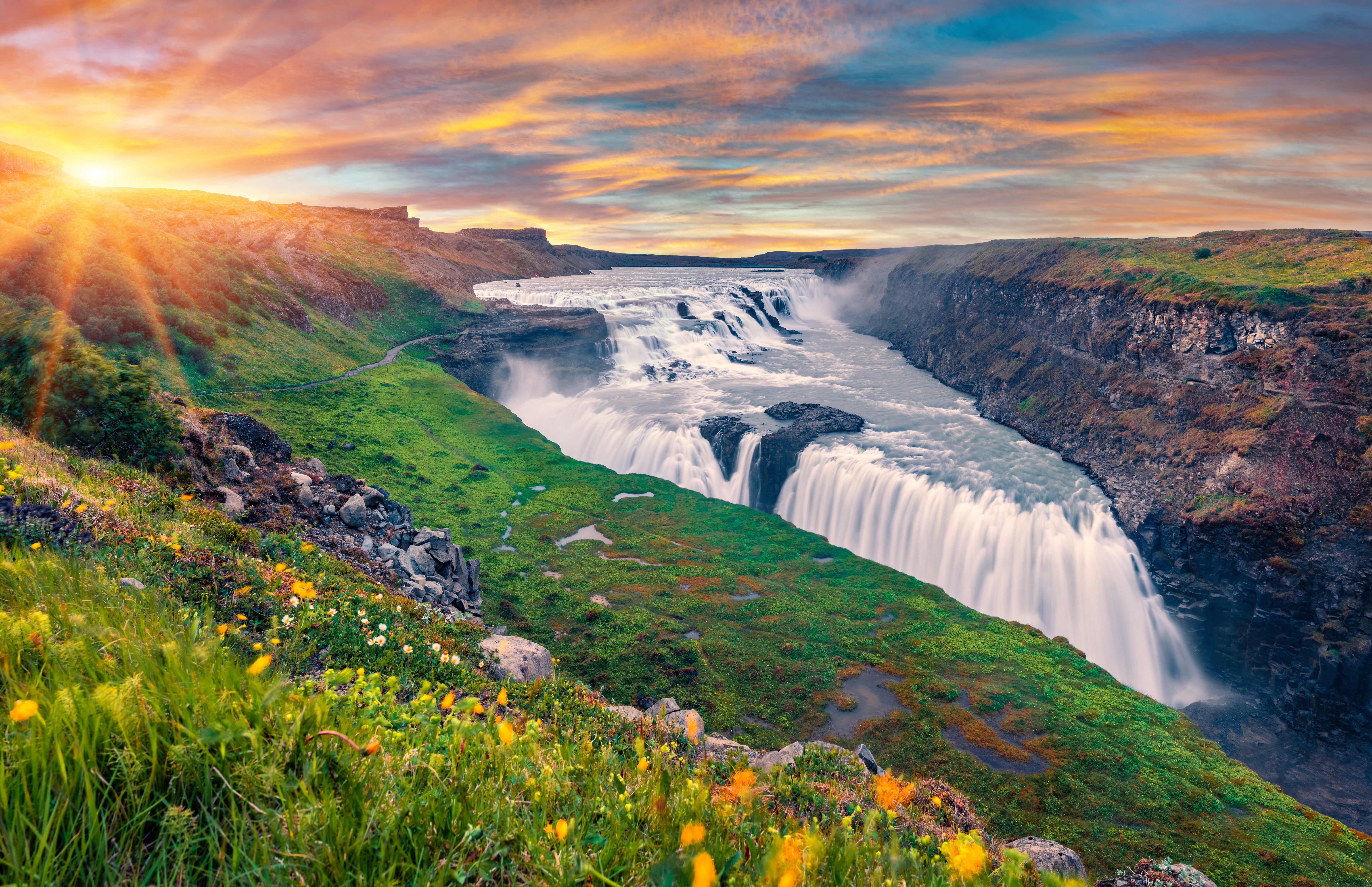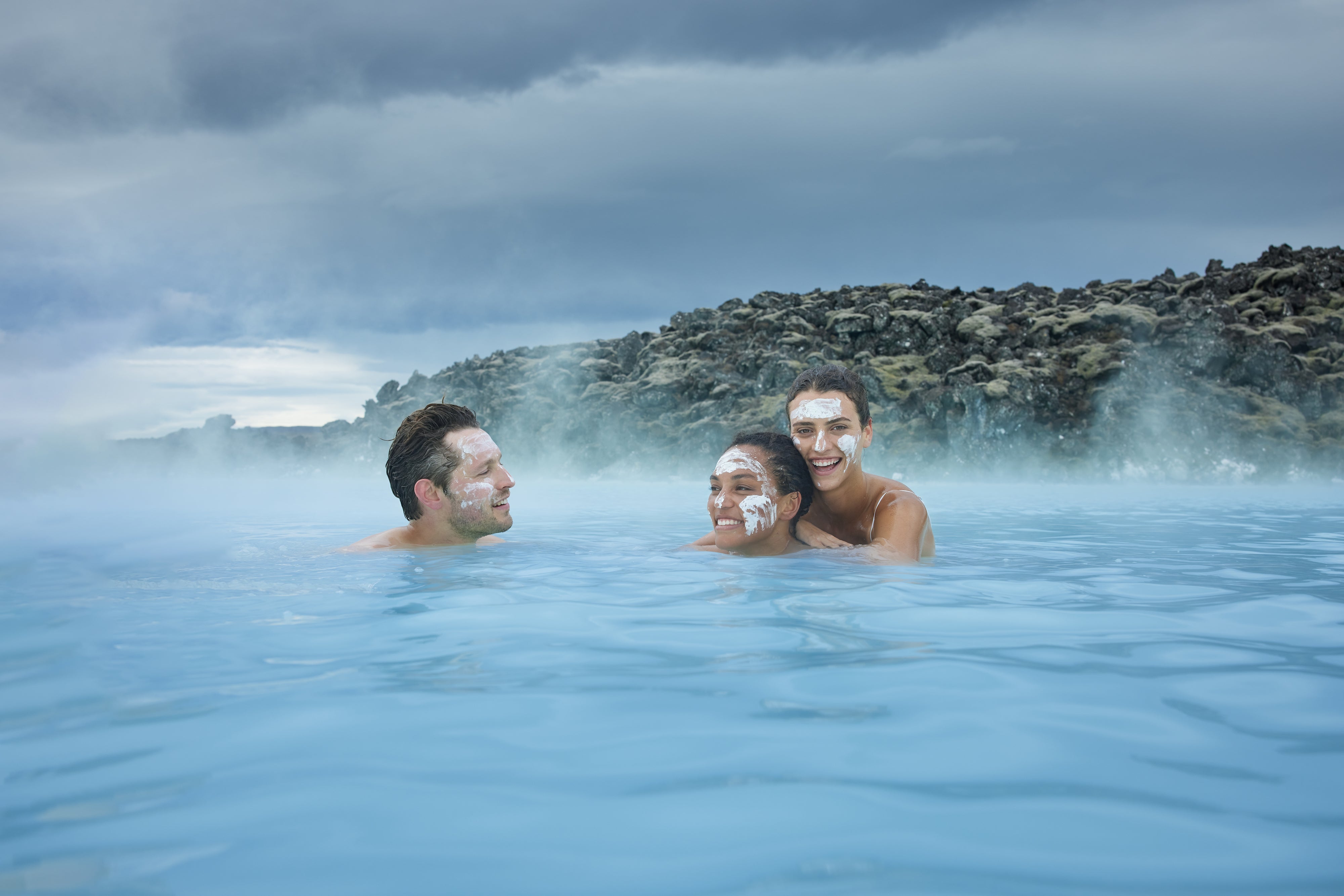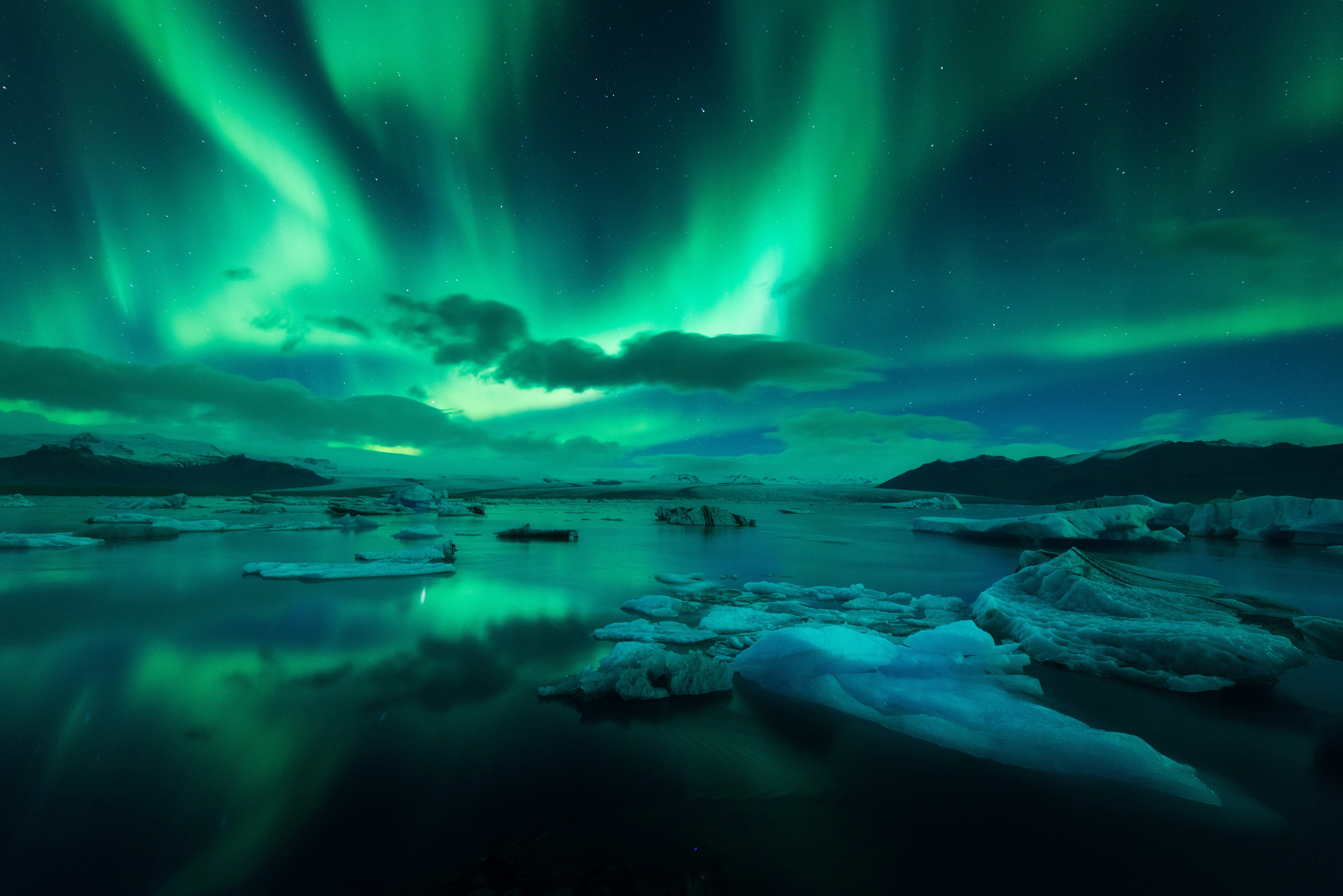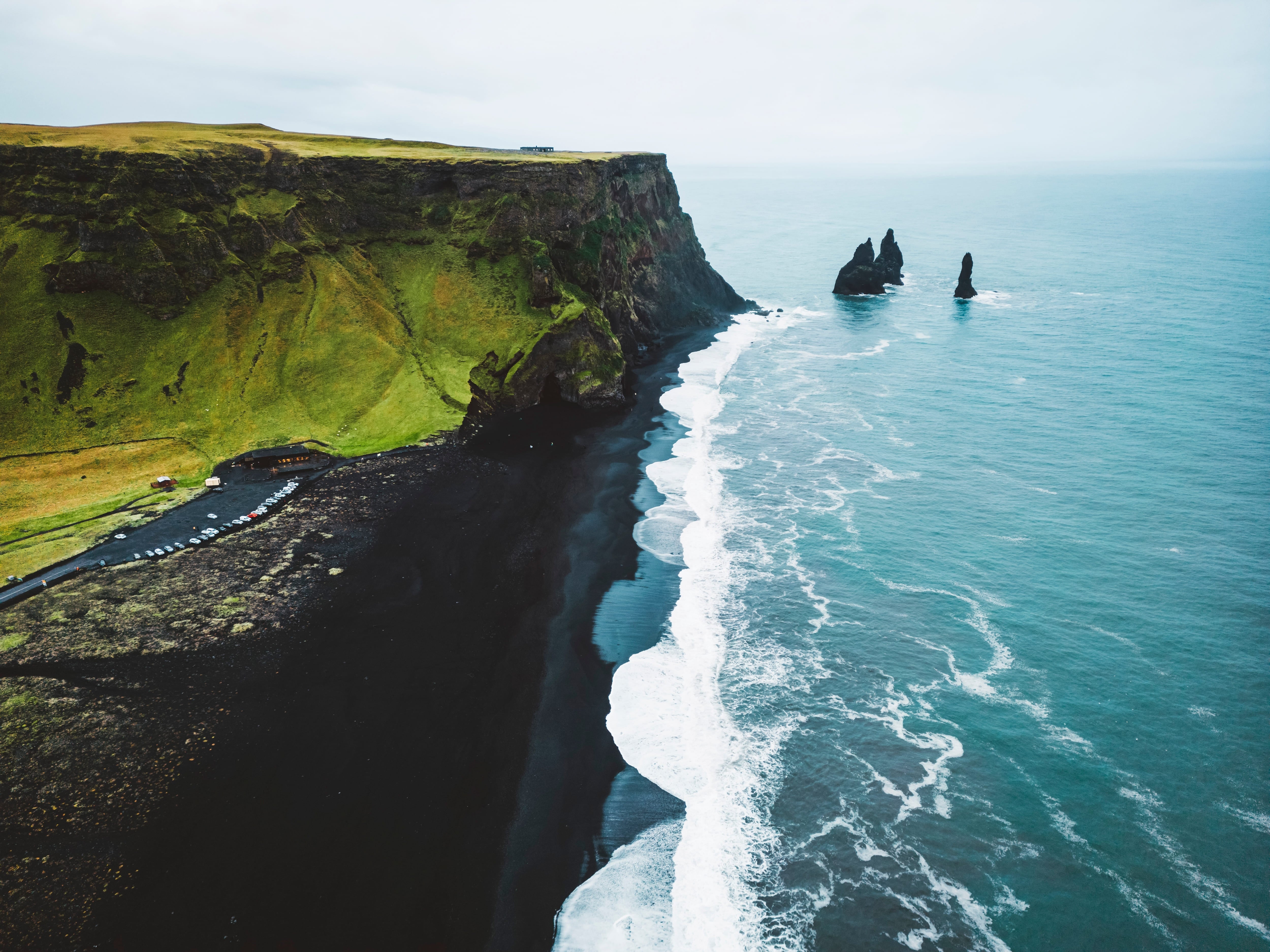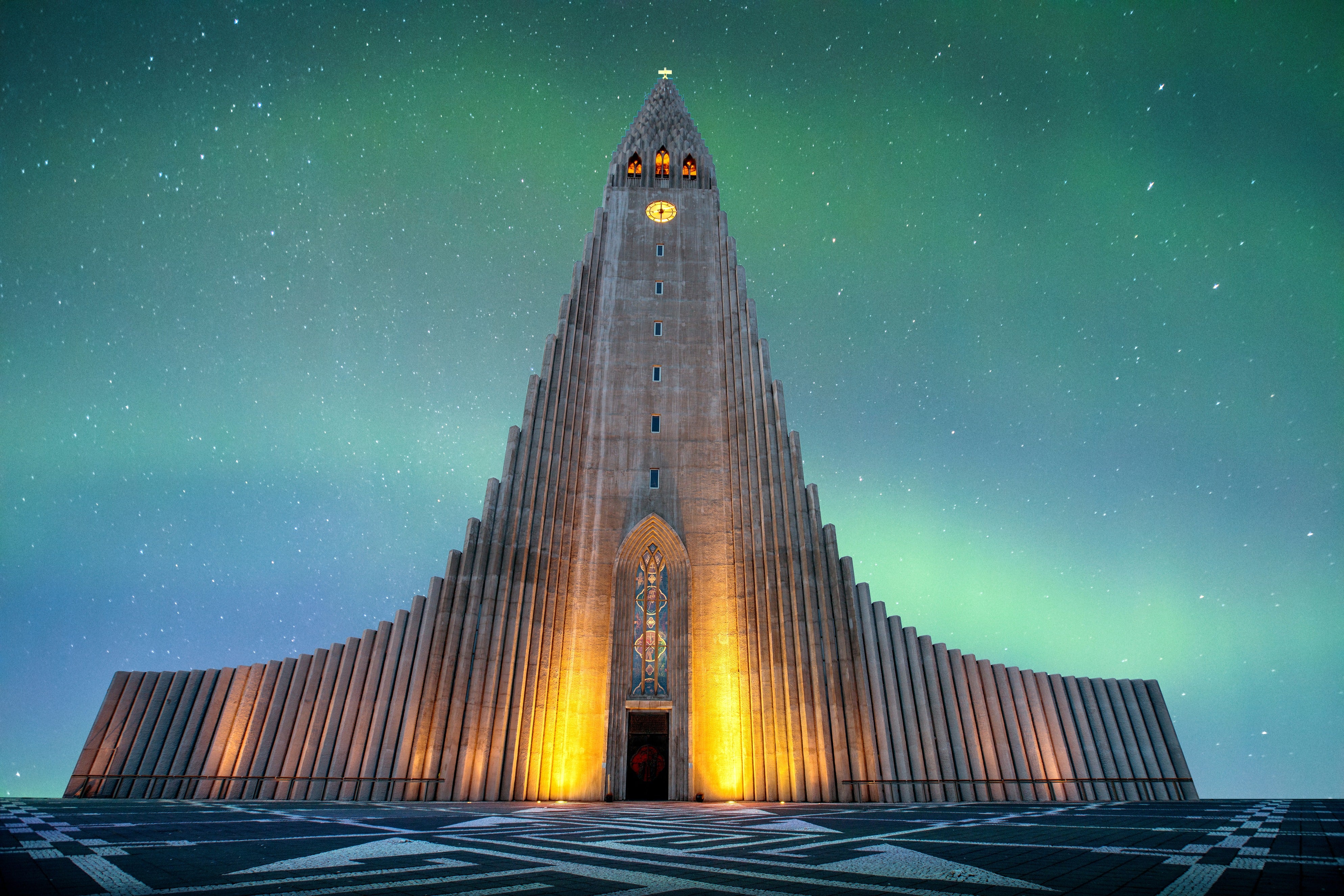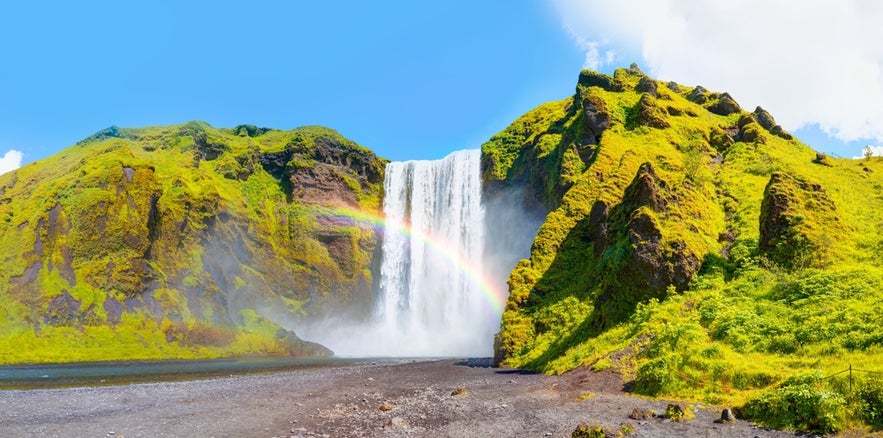
Summer brings mild temperatures, long daylight hours, and easy access to much of the country. Highland roads are open, hiking trails are snow-free, and conditions are well-suited for travel. These factors make July tours in Iceland especially popular, with options available across all regions.
Travelers enjoy plenty of choices during the season. There are flexible summer self-drive tours and all-inclusive summer vacation packages with accommodation and transport included. A guided tour of the entire Ring Road, including top activities, is a popular option that features major sights and must-try experiences.
Why You Can Trust Our Content
Guide to Iceland is the most trusted travel platform in Iceland, helping millions of visitors each year. All our content is written and reviewed by local experts who are deeply familiar with Iceland. You can count on us for accurate, up-to-date, and trustworthy travel advice.
July is a great time to travel, and knowing what to expect can help you make the most of each day. Read on for tips, insights, and ideas to help shape your itinerary.
Reasons To Visit Iceland in July
-
Midnight Sun and Long Daylight Hours: Enjoy extended daylight, nearly 24/7, allowing for more sightseeing and activities, including midnight sun tours.
-
Mild and Comfortable Weather: July is Iceland's warmest month, with mild temperatures ideal for outdoor adventures like hiking, glacier tours, and road trips.
-
Accessibility to Remote Areas: Summer opens up access to the Highlands, Westfjords, and other remote regions, making it possible to explore areas inaccessible in winter.
-
Festivals and Cultural Events: July is a vibrant month with numerous festivals, music events, and cultural activities across Iceland.
-
Whale and Puffin Watching: July is an optimal time for whale watching, with many species returning to feed, and for spotting puffins before they depart in August.
- See also: The Ultimate Guide to Iceland in Summer
Is July a Good Time to Visit Iceland?
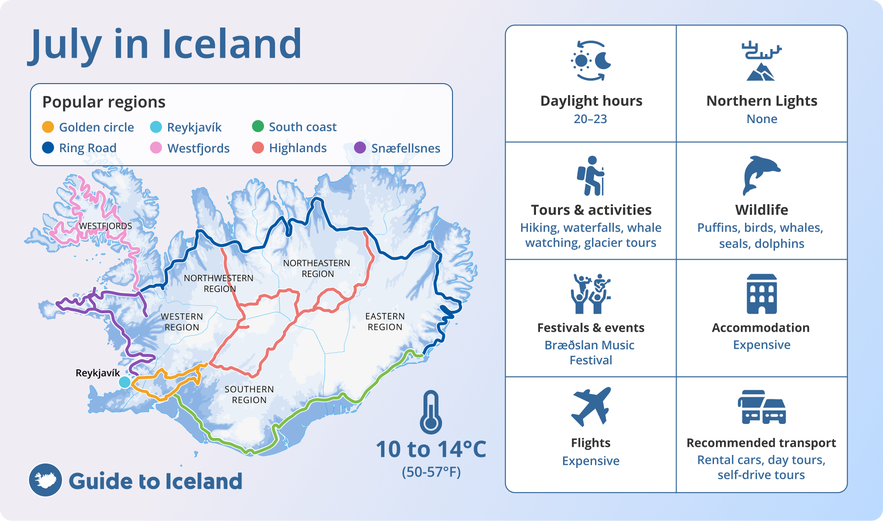
The outdoor adventures are endless, from glacier hiking to horseback riding. For outdoor enthusiasts more interested in the sights than adrenaline, horses, sheep, puffins, and other birds dot the lush green landscape.
Most importantly, the weather in Iceland in July is mild—not too hot or cold.
But is Iceland Crowded in July?
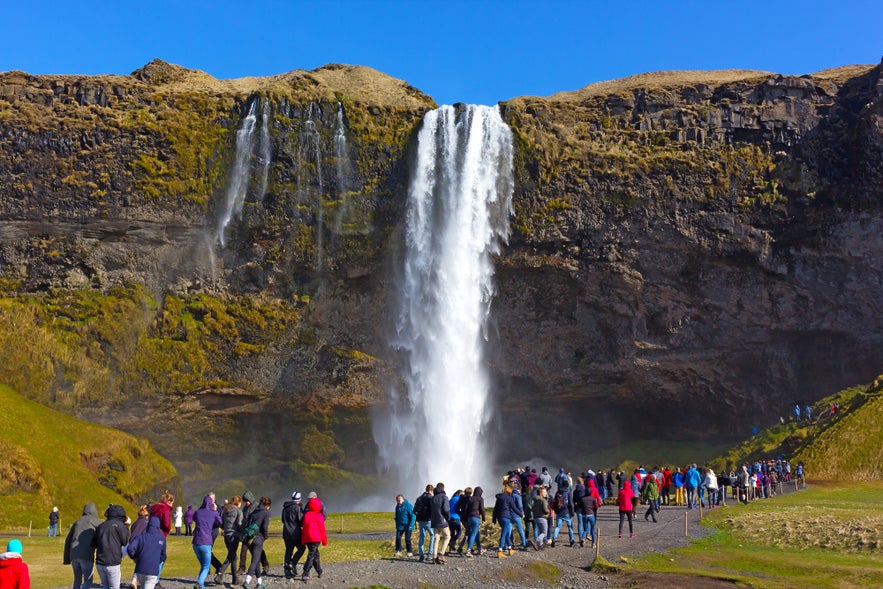 Since July is the busiest month for tourism in Iceland, visitors can expect more crowds than in winter months. But the Iceland July weather also means there is more to do with the longer days, hiking trails opening, and many towns hosting festivals. The unique midnight sun attracts many visitors, too.
Since July is the busiest month for tourism in Iceland, visitors can expect more crowds than in winter months. But the Iceland July weather also means there is more to do with the longer days, hiking trails opening, and many towns hosting festivals. The unique midnight sun attracts many visitors, too.
So yes, you can expect it to be more crowded and expensive—everything from flights and hotels to meals and tours can be pricier in July. But it’s popular for a reason: Iceland in July is incredible!
If you'd like to avoid the busiest times but still want to visit Iceland in the summer, don’t stop planning your trip to Iceland in July. Planning ahead can help you navigate peak times, and taking guided tours can keep you out of the hustle and bustle. Remember to book your trip in advance. The earlier you book, the cheaper it will be.
If planning everything is too overwhelming, consider a preplanned summer vacation package where your accommodations, transportation, and activities are conveniently arranged for you. Packages are available for all combinations of activities and must-see destinations, so you can be sure to see it all.
How is the Iceland Weather in July?

It's essential to check the weather before heading out, especially if you're planning outdoor activities like a glacier tour or hitting the road on a week-long self-driving tour around the country.
The Icelandic Meteorology Office's website is an excellent resource for keeping current with weather conditions throughout the country, and the Road and Coastal Administration's website provides 24/7 information on road conditions in Iceland.
Though Iceland's roads are open in summer, flooding and landslides may still cause closures. Visitors may also encounter strong winds and surprise storms. Always check for safe travel alerts before heading out on your own.
- See also: The Weather & Temperature in Iceland
What Is the Temperature in Iceland in July?
Although an "Icelandic summer" seems contradictory, this mythical season exists—June, July, and August are Iceland's warmest and driest months.
By traditional definitions, Iceland is hardly ever "warm" or "dry." It's generally classified as having an oceanic or cool temperate maritime climate, meaning temperatures tend to remain below 71.6 F (22 C) in the summer. Average temperatures in July hover between 50–59 F (10–15 C).
That said, in the past, the temperature has reached as high as 86 F (30 C) and as low as 38 F (3.5 C), with the low reaching 33.8 F (1 C) in the East Fjords in 2015.
To plan efficiently, count on temperatures hovering around 50 F (10 C).
How Much Does It Rain in Iceland in July?
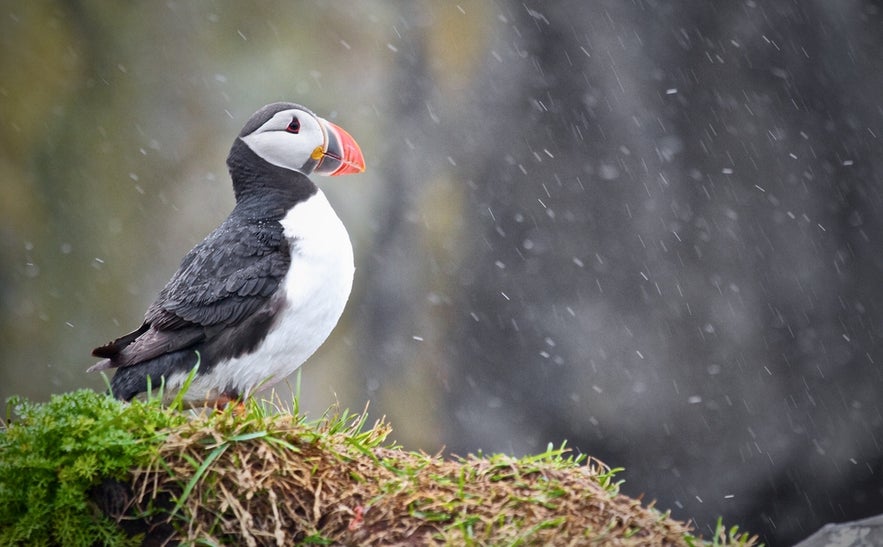 The country is at a crossroads between the Arctic and temperate seas, so summer rain is common. Even during Iceland’s mild summer, low-pressure systems pass through the island, bringing heavy rain storms with them.
The country is at a crossroads between the Arctic and temperate seas, so summer rain is common. Even during Iceland’s mild summer, low-pressure systems pass through the island, bringing heavy rain storms with them.
The weather in the Highlands is especially unpredictable, so travelers should bring sunglasses, warm clothing, and waterproof outerwear.
In July, the average rainfall is around 2 inches (50 millimeters), with an average of 10 days of rain. But, because of the unexpected overcast and rainy days, Icelandic meteorologists joke that summer in Iceland is canceled every few years.
Despite its rainy tendencies, July is still one of the sunniest periods in Iceland, with little rainfall compared to other months. When you travel to Iceland in July, you will likely experience all kinds of weather, so pack accordingly.
What To Pack and Wear in Iceland in July
Here are our recommendations for what you should pack.
-
Multiple layers: You can add and remove layers as the weather changes.
-
Waterproofs: Bring a lighter, waterproof, wind-resistant jacket and trouser combination so you can pack them in your bag and grab them when needed.
-
Hiking boots: The terrain in Iceland is rugged; sturdy boots are a must.
-
Swimwear: Iceland has plenty of swimming pools and natural hot springs to enjoy. Don't miss out because you forgot your swimwear.
-
Sunglasses and sunscreen: The sun can be bright and intense in Iceland in July. Be sure you're well protected.
-
Eye mask: That midnight sun can make it hard to sleep, especially if you're camping. Seriously, Iceland has daylight nearly 24/7 in midsummer. Bringing a dark eye mask will really help.
Speaking of Daylight in Iceland in July
Although the sun doesn't shine all night in July, it will still be bright during the night. The summer equinox is on June 21. From that date on, the sun begins to go down 1-3 minutes a day earlier. By the end of July, the sun will set for a few hours in the early morning.
On July 1, the sun isn't visible from 11:56 PM to 3:06 AM, although the sky will still be very light. By July 31, the sun will set at 10:33 PM and rise at 4:31 AM. Although the twilight brightness might still count as daylight to many.
Midnight Sun in Iceland in July
A unique opportunity that only exists in June and July is sightseeing beneath the midnight sun. Summer's endless hours of light can sometimes disrupt your sleeping pattern, but it also means that there are over 20 hours of sunshine (and nearly constant light), allowing you to make the most of your trip around the country. Just remember to bring your sleep mask.
Joining a sightseeing tour after regular hours will likely avoid crowds at the most popular sites. Considering how busy July can get, it's a good idea to take advantage of all the midnight sun tours to beat the crowds.
Those with a passion for photography might be interested in this 12-day photography workshop through the country's incredible landscapes by night. The midnight sun offers more than just one golden hour window.
Of course, if you don't want to take a tour, you can rent a small, cheap car and enjoy a quiet nighttime drive through Iceland’s scenic landscapes.
Driving in Iceland in July
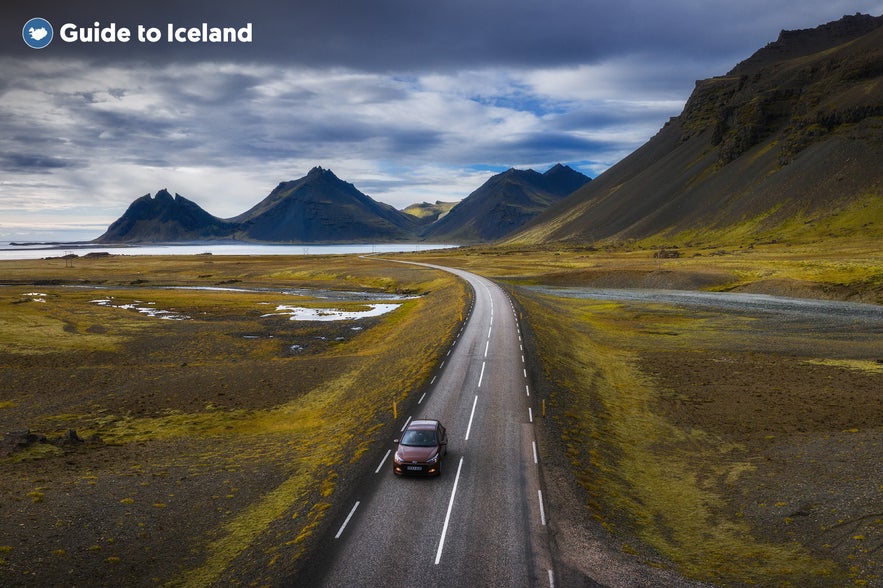 Iceland is the perfect driving vacation spot in July. It's warmer, the roads are open, and the weather is mild. This means that you can travel around Iceland in July with safer driving conditions and much more to do.
Iceland is the perfect driving vacation spot in July. It's warmer, the roads are open, and the weather is mild. This means that you can travel around Iceland in July with safer driving conditions and much more to do.
Improved road and trail access unlocks even the most remote parts of Iceland. In fact, areas like the Highlands only become accessible only in summer—and only with 4x4 vehicles.
There's no better way to enjoy Iceland's weather in July than by taking a road trip.
Best Things To Do in Iceland in July
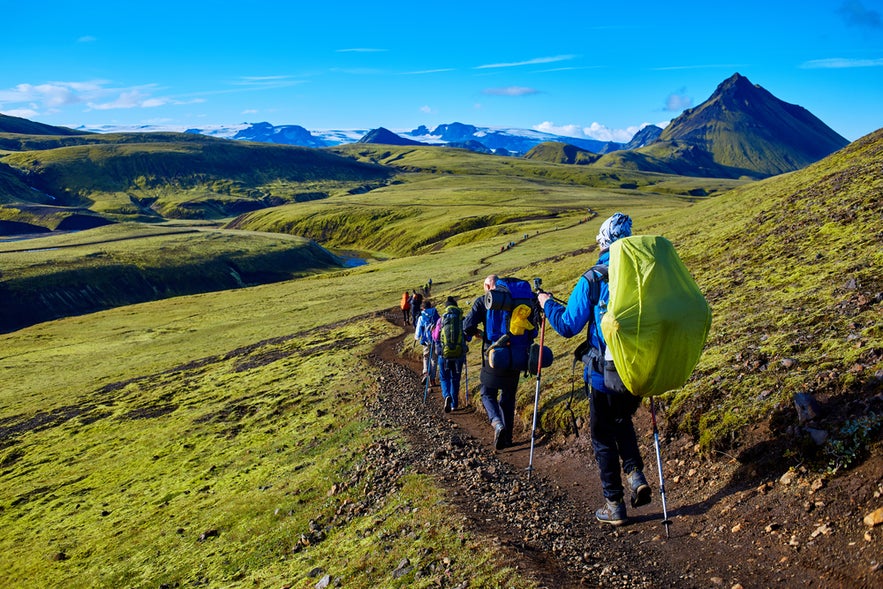 If you’re wondering what to do in Iceland in July, the most obvious answer is—everything! Many visitors are able to hit all the high points by traveling across the country by road, exploring its rich natural wonders.
If you’re wondering what to do in Iceland in July, the most obvious answer is—everything! Many visitors are able to hit all the high points by traveling across the country by road, exploring its rich natural wonders.
You don’t have to plan the drive yourself with popular multi-week journeys like the epic two-week Ring Road and Westfjords tour. Despite its relatively small size, you could circle the entire country for a month, and you still wouldn't see everything that Iceland in summer has to offer.
When making plans for a holiday during this month, prioritizing is essential. Some want to immerse themselves in nature, while others seek adventure.
You might want to learn about Iceland's history, literature, and culture or participate in one of Iceland's many festivals. The options are endless, so here are the top things to do in Iceland in July.
Camping in Iceland in July
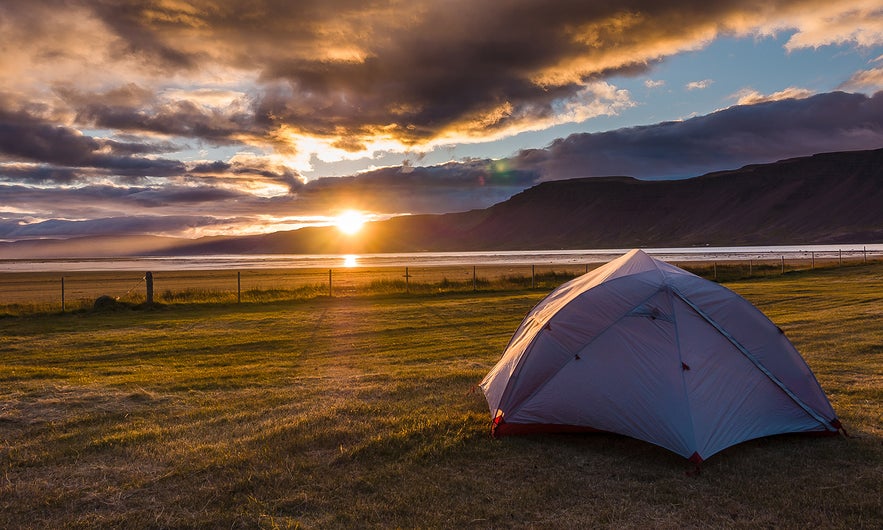 Camping is an incredibly popular pastime during Iceland’s summer months. With the warmer weather, campsites across the country are open to guests, offering an affordable option for travelers on a budget in Iceland. It’s also the best way to fully absorb the beautiful scenery.
Camping is an incredibly popular pastime during Iceland’s summer months. With the warmer weather, campsites across the country are open to guests, offering an affordable option for travelers on a budget in Iceland. It’s also the best way to fully absorb the beautiful scenery.
Most Icelandic campsites are in stunning locations, sitting in the shadows of Iceland’s most famous destinations, from Skaftafell Nature Reserve to the Landmannalaugar Geothermal Region.
But remember that there are still rules to follow when camping in Iceland.
General Rules To Remember When Camping in Iceland
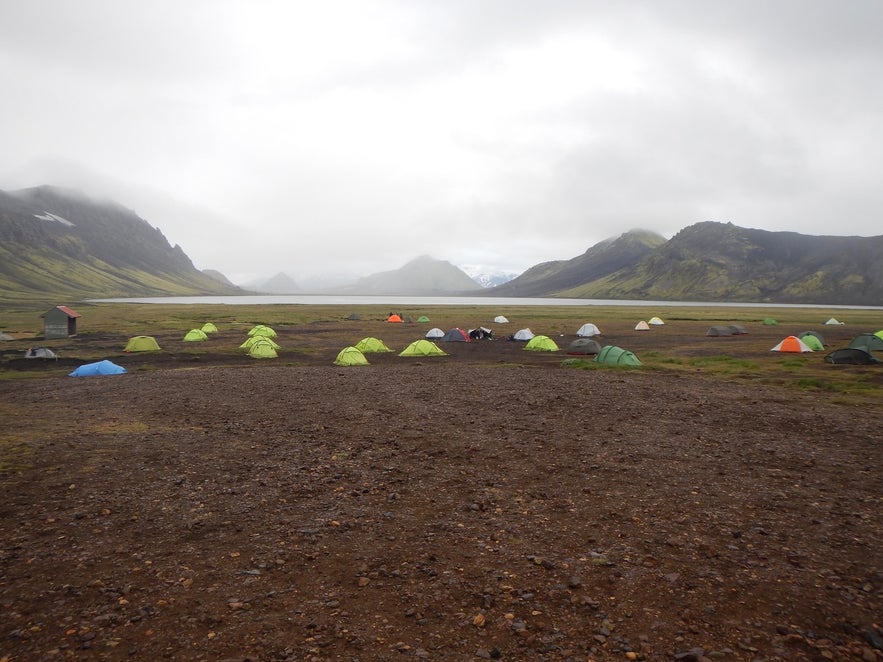 Here are a few things to remember if you're planning to camp in Iceland:
Here are a few things to remember if you're planning to camp in Iceland:
-
If it damages nature or violates property lines, you shouldn't do it.
-
Only camp in marked campsites. Camping on private property (without permission from the landowner) or in a national park is illegal and will result in hefty fines.
-
Camping one night on untilled (non-farming) land is allowed, but only if there are fewer than three tents and no waste left behind. Open fires are banned.
-
If you rent a campervan or car with a rooftop tent, you can only stay at an official campsite.
You're welcome to bring camping equipment to Iceland, or you can rent your adventure gear. Either way, many rental car companies offer luggage boxes to store the equipment on the roof of your rental car.
No matter how you choose to travel, always respect the untouched nature of Iceland around you to help preserve it for generations to come. Wherever your adventure takes you, leave no trace behind.
Hiking in Iceland in July
Whether you slept outside the night before or not, hiking is the preferred method of sightseeing for many visitors, especially in July. The trails offer unique views of glaciers, volcanoes, lava fields, forests, lakes, and rivers.
You can plan your route or choose a guided hiking tour. While several trails are accessible year-round, the most spectacular ones are only open between June and September for safety reasons.
Avid hikers have a wealth of multi-day treks to choose from. The most renowned routes are the famous Laugavegur and Fimmvorduhals trails, which take you from the spectacular Highland region of Landmannalaugar to the lush Thorsmork, or "Valley of Thor.”
For those who want to spend some time in Iceland’s remote landscapes, a 4-day Highland hiking tour of the Laugavegur Trail from Reykjavik offers a well-paced trek from Landmannalaugar to Thorsmork. A more comprehensive option is a 7-day Highlands hiking tour of Laugavegur Trail with South Coast for a multi-region adventure.
There are many one-day hikes for those eager to see pristine natural areas but don't want to stay overnight, such as a 5-hour hiking and hot springs tour of Landmannalaugar. See our guide to hiking in Iceland for recommended trails.
Glacier Tours in Iceland in July
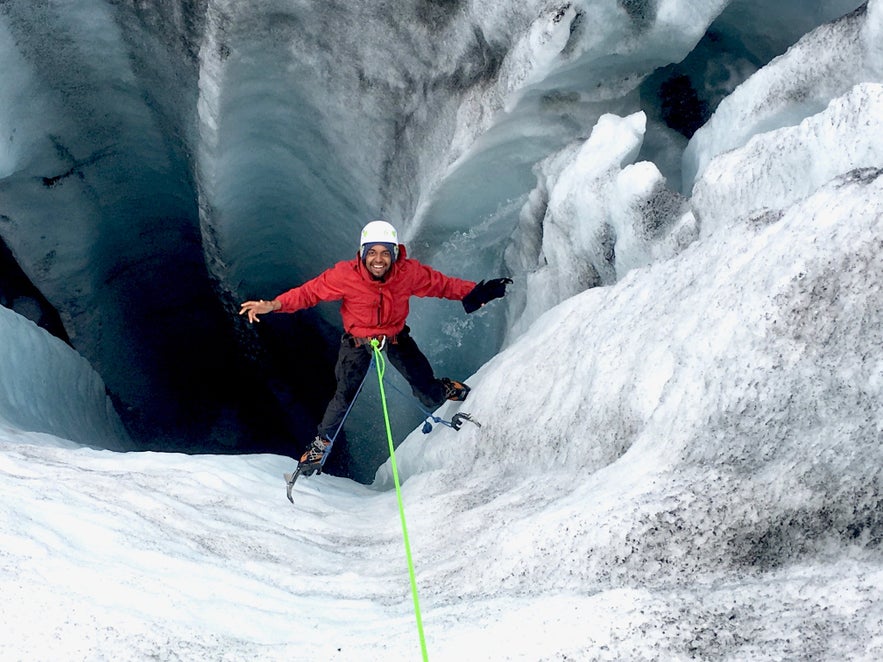
For instance, visitors take tours of Iceland's incredible glaciers year-round, but the warmer temperatures and bright sunlight in July in Iceland awaken the majesty of these treasures. The calm summer weather makes glacier visits much more pleasant (and safe) than at other times of the year.
You should wear warm clothes and sturdy hiking boots for glacier visits. Even in summer, it’s still a glacier—cold, windy, and slippery. You should also consider throwing on sunglasses since the sun reflecting off the snow and ice can be blinding.
There are glacier hikes to almost all of Iceland's glaciers during July, like this tour on Solheimajokull Glacier and this Skaftafellsjokull Glacier expedition. There's even one ice cave you can visit in July by booking this Katla ice caving tour!
You can also zoom across the glaciers’ snowy surfaces by booking a snowmobile tour. On top of the thrill, it's an incredible opportunity to take in the stark views of the snowy landscapes surrounding you.
If you're staying in the capital, this snowmobile tour, combined with the Golden Circle, starts and ends in Reykjavik, so you don't have to worry about getting to the glaciers. You can also ride across the largest glacier in Europe on this snowmobiling tour of the Vatnajokull Glacier.
Snorkeling and Diving in Iceland in July
 Like glacier tours, snorkeling tours and diving excursions in Iceland run year-round. However, July offers a key advantage: putting on and removing your gear is much more comfortable in the warmer summer air.
Like glacier tours, snorkeling tours and diving excursions in Iceland run year-round. However, July offers a key advantage: putting on and removing your gear is much more comfortable in the warmer summer air.
Silfra Fissure is located in Thingvellir National Park and is at its most vibrant in July, with colorful algae blooming between the North American and Eurasian tectonic plates. Most tours this time of year take place in this stunning gorge, where visibility can exceed 328 feet (100 meters) thanks to the water’s exceptional clarity.
To make the most of your time, you can find combination tours that pair an unforgettable Golden Circle tour with snorkeling or an adventurous lava caving tour with snorkeling.
To ensure safety in Iceland’s cold and clear waters, all snorkeling and diving tours have strict age, health, and physical requirements. These vary depending on the type of activity and equipment used.
General Health Restrictions
-
Individuals with circulatory, respiratory, or neurological conditions may not be permitted to dive without a health certificate or waiver.
-
People 45 and older who smoke a pipe or drink heavily may require a health certificate.
-
Pregnant women cannot take these tours.
There are also specific requirements for each tour, depending on the type of suit you'll wear and whether you're snorkeling or diving. Age, size, and experience thresholds help ensure a safe and comfortable experience in Iceland’s cold waters.
Drysuit Snorkeling
-
Minimum age: 12
-
Maximum age: 60
-
Minimum height: 4 feet 9 inches (145 centimeters)
-
Minimum weight: 99.2 pounds (45 kilograms)
-
Experience needed: must be a swimmer
Wetsuit Snorkeling
-
Minimum age: 14
-
Maximum age: 60
-
Minimum height: 4 feet 11 inches (150 centimeters)
-
Minimum weight: 111 pounds (50 kilograms)
-
Experience needed: must be a swimmer
Drysuit Diving
-
Minimum age: 17
-
Maximum age: 60
-
Minimum height: 4 feet 11 inches (150 centimeters)
-
Minimum weight: 111 pounds (50 kilograms)
-
Experience needed: at least 10 logged drysuit dives OR a certified dry suit diver
While you can snorkel in either a wetsuit or a drysuit, you can only dive in a drysuit because of the cold temperatures. In July, the water temperature in Iceland averages 35.6 F (2 C), and the water below the surface can be even colder, making it dangerous to dive without good insulation—in this case, a drysuit.
- See also: Diving and Snorkeling in Silfra fissure
Horse Riding in Iceland in July
 Horse riding tours are popular all year, but are much more comfortable in the July weather in Iceland when it's less likely to rain. Trails are typically drier and more accessible, and the landscapes—whether grassy valleys, coastal paths, or lava fields—are at their greenest and most vibrant.
Horse riding tours are popular all year, but are much more comfortable in the July weather in Iceland when it's less likely to rain. Trails are typically drier and more accessible, and the landscapes—whether grassy valleys, coastal paths, or lava fields—are at their greenest and most vibrant.
One of the highlights of riding in Iceland is meeting the unique Icelandic horse. These small but sturdy horses are famous for their calm temperament, thick coats, and adaptability to rough terrain.
Despite their size, they’re strong enough for adult riders and incredibly sure-footed, traits developed over centuries of navigating Iceland’s rugged volcanic landscape.
Icelandic horses have a unique gait called a tolt, known as the "fifth gait." When the horse is tolting, it'll always have one foot on the ground. This gait is very smooth since there's no suspension between strides, and rumor has it that you can drink water from a glass without spilling while in this gait.
Many horse-riding tours start from Reykjavik, but they also leave from some northern towns like Husavik. This epic 7-day horse riding adventure runs exclusively in July and will allow you to explore and experience many beautiful sites in the Eastfjords of Iceland.
Lava Caving in Iceland in July
Lava cave tours are among the best things to do in Iceland in summer. As the temperatures have increased, the snow and ice that blocked many cave entrances in winter have melted.
For those who love adventure, the Leidarendi Cave needs a bit of climbing and crawling to traverse. It’s narrow, rugged, and perfect for thrill-seekers looking for a more hands-on experience. The Raufarholshellir and Vidgelmir caves are more family-friendly, where you can stand up and walk around.
To make an entire day out of a lava caving tour, combine it with an exploration of Greenland in this six-hour lava caving tour that transfers to Reykjavik.
- See also: Caves in Iceland
ATV and Buggy Mountain Tours in Iceland in July
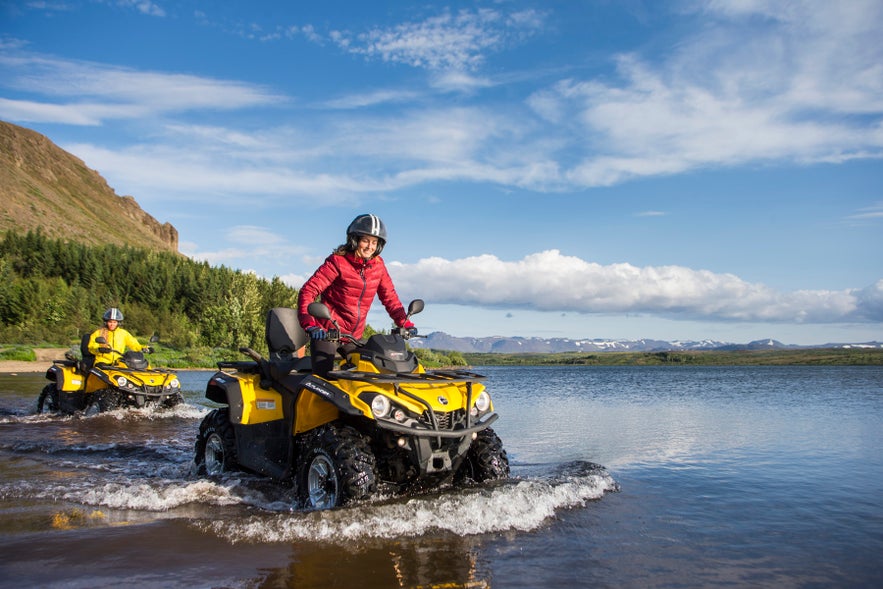
Many tours take you through black sand beaches, volcanic hills, river valleys, or rugged mountain paths that few other vehicles can access. These guided tours usually provide a training session and the safety equipment you'll need, including overalls, gloves, and helmets.
Whale and Puffin Watching in Iceland in July

The same is true of Iceland's puffins. In June, they return to the island and stay until August, making July the optimal time to spot them. Thousands of them congregate around the country, particularly in Latrabjarg Cliff in the Westfjords, Dyrholaey Peninsula in the south, and the Tjornes Peninsula in the north.
For a well-rounded wildlife experience, some tours offer a combination of whale watching and puffin viewing. These tours take you to coastal cliffs or offshore islands where puffins are nesting, providing excellent opportunities to see these seabirds up close.
Puffin stops typically include offshore islands or coastal cliffs where the birds are actively nesting. You can listen to guides provide context about puffin behavior, habitats, and seasonal patterns.
There’s usually enough time to observe the birds both in the air and along the shoreline before continuing the marine portion of the tour.
Most whale-watching tours start from Reykjavik during the summer and generally last from one to three hours. In July's fair weather, it's more pleasant on the ship's deck, and whale sightings are very common.
Few ships return to land without spotting seals, dolphins, or porpoises. Most tours offer another trip if your outing was unsuccessful.
The best-rated whale-watching tour departs from Husavik in North Iceland. The number of fish in Skjalfandi Bay means you're likely to see multiple humpbacks feeding.
You can also take a whale-watching tour from Akureyri, known as the capital of North Iceland.
If you prefer to stay on dry land, you still have a chance to see a whale. Whales are regularly spotted from the coast in the Westfjords, Eastfjords, and the Snaefellsnes Peninsula, especially on the northern side, overlooking Breidafjordur's herring grounds.
- See also: Whale Watching in Iceland
- Learn more: The Wildlife and Animals of Iceland
Cultural Events in Iceland in July
Throughout the summer months, Iceland comes to life with festivals. Here are some of the main annual events happening in July.
Landsmot Hestamanna
The annual National Icelandic Horse Competition is held in early July at a rotating location in Iceland's countryside. It features demonstrations of gaits, dressage, and various get-togethers for horse enthusiasts.
The Song Festival in Hafnarfjordur
The Song Festival in Hafnarfjordur (Songhatid i Hafnarborg) runs from late June into early July. The concerts, which mostly feature operatic and classical singers, are held in the town’s Hafnaborg Center of Culture and Fine Art, which is located near Reykjavik.
Chamber Music Festival in Reykholt
On the last weekend of July, you can visit the western town of Reykholt for its Chamber Music Festival. One of its four concerts is presented in collaboration with the Snorrastofa Centre, which is dedicated to the medieval writer, historian, and chieftain Snorri Sturluson.
Festivals in East Iceland
Several festivals also take place in East Iceland during July, especially in the town of Seydisfjordur.
-
The Blaa Kirkjan Concert Series takes place in the town church, and its events take place throughout June, July, and August.
-
The Eistnaflug festival is a heavy metal festival featuring bands from Iceland and abroad. It's held at Neskaupstadur in eastern Iceland in July.
-
The Braedslan festival, a music festival held in a renovated fish factory, takes place in Borgarfjordur Eystri during the last weekend of July.
- See also: Top 25 Festivals in Iceland
What To See in Iceland in July
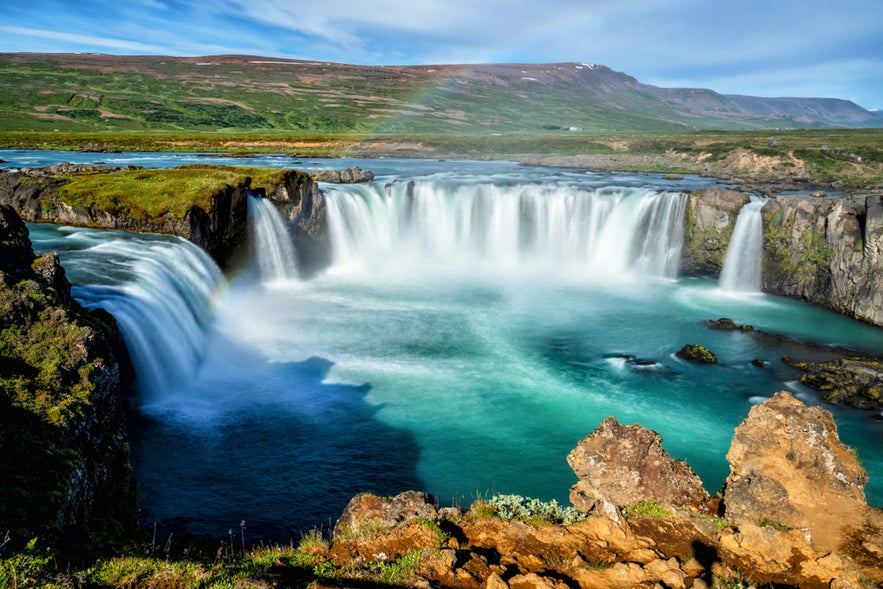 Summer is the best time to explore Iceland beyond the usual stops. While you can still visit the Golden Circle and other year-round destinations, July gives you access to regions that are closed or difficult to reach in other seasons.
Summer is the best time to explore Iceland beyond the usual stops. While you can still visit the Golden Circle and other year-round destinations, July gives you access to regions that are closed or difficult to reach in other seasons.
Roads are clear, wildlife is active, and highland routes are open, making it easier to experience more of the country. From dramatic waterfalls in the Westfjords to colorful geothermal areas in the Highlands, July offers a rare chance to see Iceland at its widest and most vibrant.
Here are the top places to visit in Iceland in July:
Lake Myvatn Area and North Iceland
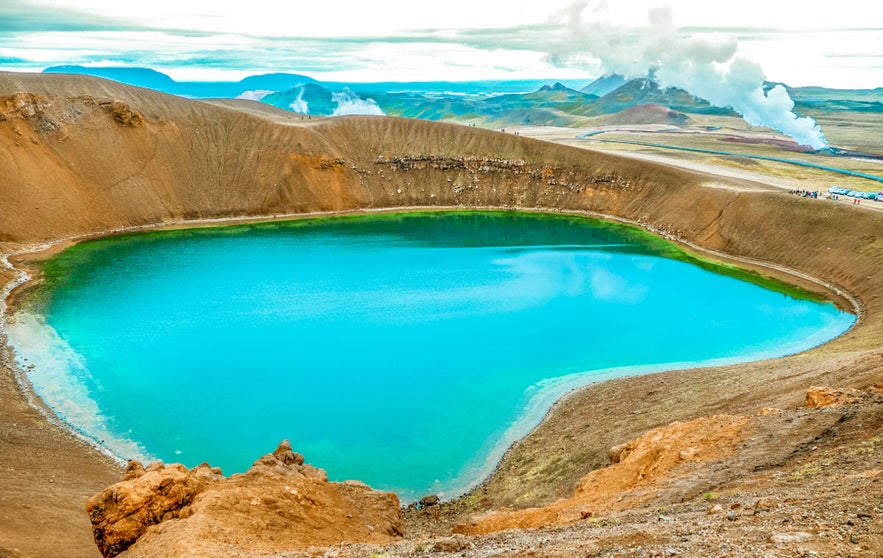 North Iceland opens up. Though Lake Myvatn can be explored year-round, places like the Viti Crater (yes, Viti means “hell” in Icelandic) and the dramatic Krafla Lava Fields are fully accessible in July. The lake's surrounding shores are also teeming with wildlife, with over 15 duck species, making it an ideal destination for birdwatchers.
North Iceland opens up. Though Lake Myvatn can be explored year-round, places like the Viti Crater (yes, Viti means “hell” in Icelandic) and the dramatic Krafla Lava Fields are fully accessible in July. The lake's surrounding shores are also teeming with wildlife, with over 15 duck species, making it an ideal destination for birdwatchers.
The roads around the Vatnsnes Peninsula are also open in the summer, and it's a popular destination for seal watching.
If you're looking to relax during your trip, you can book a Lake Earth Lagoon admission ticket for a simple and flexible visit. For a more immersive day, the Lake Myvatn sightseeing and hot springs tour combines entry to the nature lagoon with visits to nearby natural wonders.
One of the most extensive options is a North Iceland waterfalls, Lake Myvatn, and geothermal lagoon tour. This experience includes major highlights of the region as well as other attractions along the Diamond Circle.
The Westfjords of Iceland
 The Westfjords are impossible to reach in winter, and residents of the smallest villages often have to access the outside world by boat. However, in summer, most of its sites—notably, the iconic Dynjandi Waterfall and the Hornstrandir Nature Reserve—are easy to reach.
The Westfjords are impossible to reach in winter, and residents of the smallest villages often have to access the outside world by boat. However, in summer, most of its sites—notably, the iconic Dynjandi Waterfall and the Hornstrandir Nature Reserve—are easy to reach.
You can drive to the former and get a boat to the latter from Isafjordur, the region's largest town. There's a wide variety of accommodations in the Westfjords, so make sure to book a room before visiting.
You can also drive to the Latrabjarg Cliffs, which come to life with thousands of birds and dozens of species in summer. The scale is so big that it’s, hands down, one of the best things to see in Iceland in July. You can get within arm’s reach of many birds, but remember to respect their nests.
The Snaefellsnes Peninsula
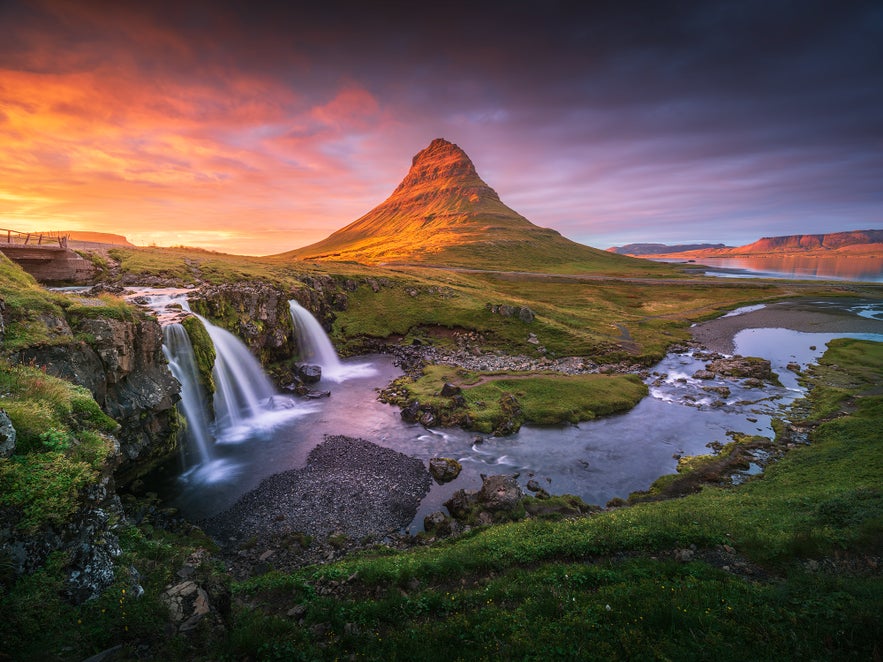 The Snaefellsnes Peninsula is much easier to drive through in the summer. When the mountain passes clear, you can reach destinations like Mount Kirkjufell and Ytri Tunga Beach on the peninsula's south side.
The Snaefellsnes Peninsula is much easier to drive through in the summer. When the mountain passes clear, you can reach destinations like Mount Kirkjufell and Ytri Tunga Beach on the peninsula's south side.
Mount Kirkjufell is one of Iceland’s most photographed landmarks, known for its striking cone shape and nearby waterfall, Kirkjufellsfoss.
Ytri Tunga, on the other hand, is a golden-sand beach known for its resident seal colony. During the summer, you can often spot seals sunbathing on the rocks or swimming close to shore, making it one of the best wildlife-watching spots on the peninsula.
The Highlands of Iceland
The Highlands are only accessible in 4x4 vehicles, even in the summer. Still, routes like the Kjolur Highland Road and Sprengisandur are open, allowing you to see the little-traveled interior of this beautiful country.
The rough mountain tracks tend to vary in quality, and sometimes it's necessary to ford the river in your vehicle, which is why you need a 4x4. Be mindful when driving, as you cannot go off-roading in the Highlands.
The renowned Landmannalaugar and the lesser-known Hveravellir Geothermal Area are open to travelers within the Highlands. At both of these sites, you can hike to find the most spectacular viewpoints and bathe in gorgeous hot springs.
If traveling to the Highlands to hike or camp, you should register your travel plans on the SafeTravel website regardless of your experience and expertise. That way, if you are out of contact or away longer than expected, search and rescue can take measures to locate you.
Suggested Iceland July Itinerary
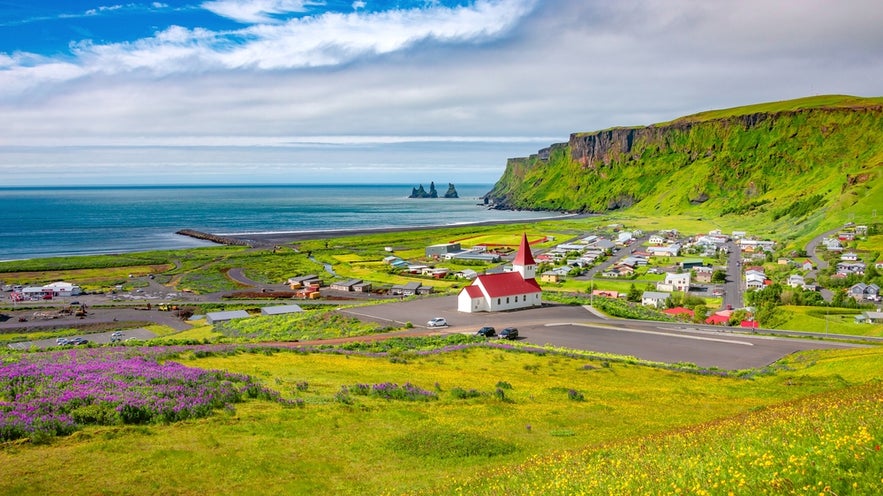 If you are traveling to Iceland in July, there are plenty of opportunities for summer tours. From self-drive itineraries to combo tours, there is a perfect vacation for nearly everyone. Long daylight hours, clear roads, and mild weather create ideal conditions for exploring the country.
If you are traveling to Iceland in July, there are plenty of opportunities for summer tours. From self-drive itineraries to combo tours, there is a perfect vacation for nearly everyone. Long daylight hours, clear roads, and mild weather create ideal conditions for exploring the country.
Travelers can choose a style that suits their pace and preferences. Some prefer self-drive itineraries that offer flexibility and independence, while others book guided packages that handle logistics and highlight key locations with the help of expert guides.
Day tours and multi-day excursions are also available, making it easy to build a personalized itinerary. No matter your travel style, July offers a wide range of ways to experience Iceland.
Self-Drive Itineraries for Iceland in July
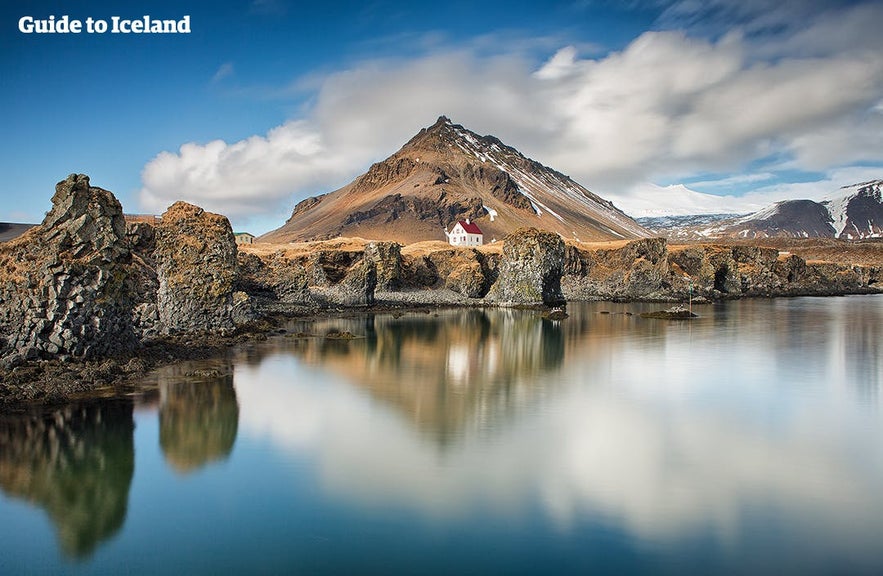
Driving Iceland's Ring Road in July
The minimum time recommended for traveling the Ring Road during the summer is between six days to seven days. This will give you enough time to see a handful of the best attractions and destinations along Iceland’s Ring Road.
These are the shortest self-drive tours available for this route. They include all four corners of the country and take you to multiple stunning locations.
-
Six-Day Summer Self-Drive: Circumnavigate Iceland's Ring Road, experiencing waterfalls, glaciers, and geothermal hotspots.
-
Seven-Day Summer Self-Drive: Take an extra day for a more leisurely exploration of Iceland's natural wonders and cultural sites.
You can add extra activities to your day, too. Our most popular additions include glacier hiking, whale watching, and a boat tour on the Jokulsarlon Glacier Lagoon.
Shorter Self-Drive Tours
If you're not planning to complete the full Ring Road, shorter self-drive tours focus on specific regions. These itineraries are ideal for travelers with limited time who still want to experience major highlights.
-
Five-Day Essential Self-Drive: This tour will allow you to enjoy the Golden Circle and South Coast in-depth and includes time at Skaftafell Nature Reserve and the Jokulsarlon Glacier Lagoon.
-
Five-Day Self-Drive Tour in West Iceland visits the Snaefellsnes Peninsula.
Longer Self-Drive Tours
For those with more time, longer self-drive tours offer a deeper and more varied experience of Iceland. These itineraries give you the chance to explore less-visited areas along with the country’s most iconic sights.
-
10-Day Summer Self-Drive: This tour starts in Reykjavik and features the Ring Road and the Snaefellsnes Peninsula.
-
13-Day Summer Self-Drive: This longer tour features the Golden Circle, the Jokulsarlon Glacier Lagoon, and the Snaefellsnes Peninsula.
-
14-Day Summer Self-Drive: This two-week tour will allow you to experience the best of Iceland, including the Ring Road and the Westfjords.
Budget Self-Drive Tours
Budget self-drive tours are perfect for travelers who want to experience Iceland’s natural beauty without the higher cost. These itineraries combine affordable travel with flexibility and adventure, often including camping accommodations.
-
Eight-Day Budget Self-Drive Ring Road Tour lets you embark on an unforgettable adventure along the Ring Road, where you can experience the Eastfjords and the Golden Circle.
-
Five-Day Budget Summer Self-Drive Tour is a shorter camping self-driving tour, where you can see the Golden Circle and South Coast.
Guided Tours and Vacation Packages in Iceland in July
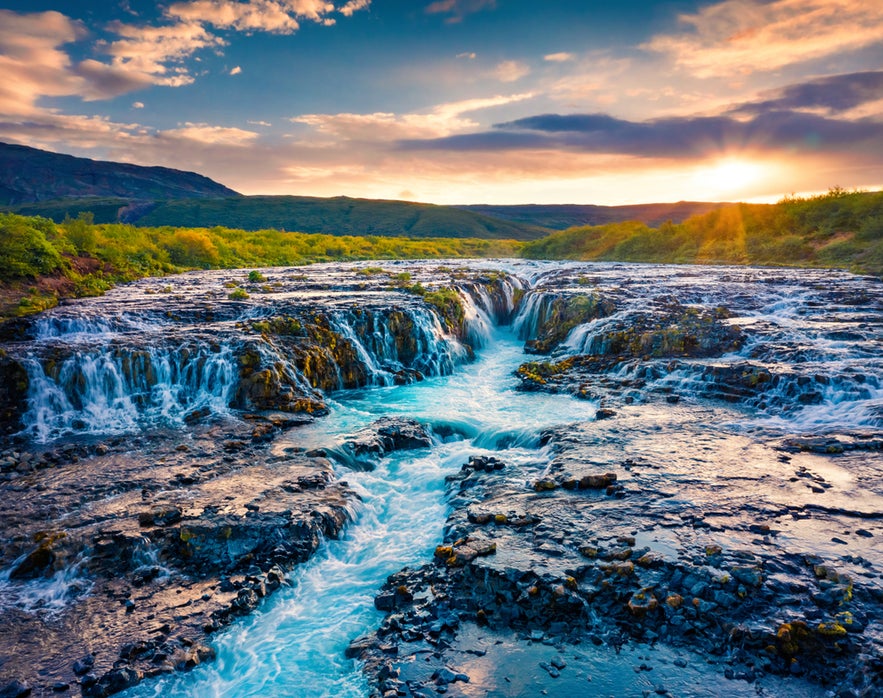 For those who prefer not to drive or plan every detail, guided tours are an excellent way to explore Iceland in July. These packages include professional guides, transportation, and carefully designed itineraries that cover a wide range of attractions.
For those who prefer not to drive or plan every detail, guided tours are an excellent way to explore Iceland in July. These packages include professional guides, transportation, and carefully designed itineraries that cover a wide range of attractions.
Whether you’re looking for a multi-day journey around the country, a scenic day trip, or a unique addition like a visit to Greenland, guided experiences allow you to relax and enjoy Iceland’s landscapes without the logistics.
Guided Packages in Iceland in July
Guided packages provide a guide in a bus and somewhat more structured days on the open road. That way, you can take in the scenery without driving yourself.
-
12-Day Summer Vacation Package of the complete Ring Road of Iceland will take you around the country and includes the Snaefellsnes Peninsula.
-
7-Day Guided Ring Road Tour is packed with activities and covers the Ring Road in half the time.
An extraordinary opportunity this July is our Iceland-Greenland packages, where you have the option to book a package to Iceland and spend a whole day in Greenland, with flights included.
Multi-Day Tours
Multi-day tours allow travelers to experience the best that Iceland has to offer in July with an expert guide and comfortable transportation.
-
2-day Summer Tour of Iceland’s South Coast: Experience black sand beaches, glacier lagoons, and hiking on this two-day tour of Iceland’s South Coast region.
-
6-day Summer Tour of Iceland: Embark on a journey that takes you through the best of Iceland's southern, eastern, and northern regions.
-
2-Day Family-Friendly Guided Summer Tour: Maximize your experience and explore under the midnight sun, including the South Coast and the Jokulsarlon Glacier Lagoon.
Guided Day Tours
Guided day tours are great for those travelers looking to add on individual day experiences to their Iceland itinerary.
-
Jokulsarlon Boat Tour: Southeast Iceland's Glacier Lagoon offers breathtaking views of towering icebergs.
-
Glacier Hiking at Skaftafell: Join a guided hike and explore the icy terrain of Vatnajokull in Southeast Iceland.
-
Snorkeling in Silfra: Experience swimming between the Eurasian and North American tectonic plates in the crystal-clear waters of Silfra fissure in Thingvellir National Park.
A Week of Things To Do in Reykjavik in July
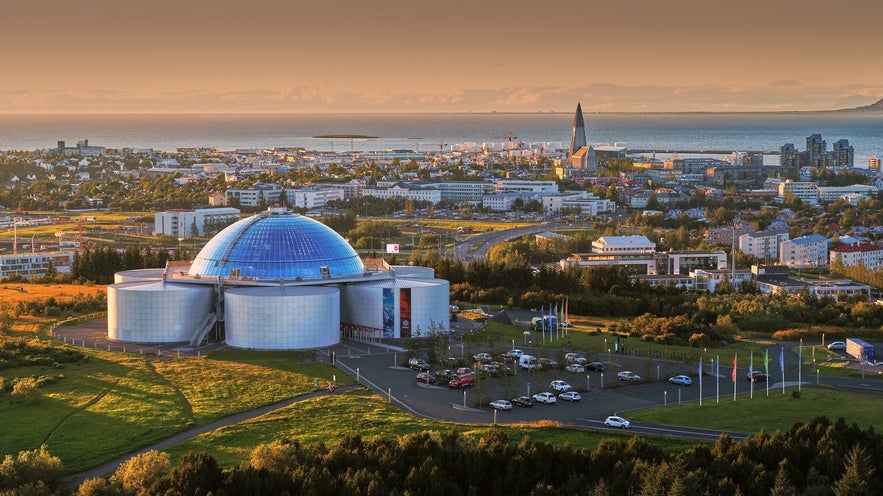
Day One
Arrive at Keflavik International Airport and take the Flybus to the Blue Lagoon. After bathing in the geothermal azure-colored waters, take the bus to Reykjavik and settle in at your hotel.
Day Two
Take a Golden Circle tour and an add-on activity like lava caving on your second day.
Day Three
Continue your adventure with a tour of the South Coast with a glacier hike on the Solheimajokull Glacier.
Day Four
Have a rest day and recharge in Reykjavik. The 24-hour Reykjavik City Card is a popular option for visitors who plan to hit more than one Reykjavik attraction. Once purchased, the card provides admission to the zoo, museums, galleries, public pools, and more.
Day Five
Take a tour of the Snaefellsnes Peninsula and spend a whole day exploring its many sites.
Day Six
On your penultimate day in Iceland, you can see more glaciers on one of these snowmobiling tours. Or you could decide to put your feet up and relax in downtown Reykjavik.
Day Seven
It's time to leave Iceland, but not before a relaxing tour of Reykjadalur hot springs, where you'll hike through Reykjadalur Valley to bathe in some natural hot springs before heading to Keflavik Airport to catch your flight.
FAQs About Iceland in July
Here are the most frequently asked questions about visiting Iceland in July.
1. What is the Weather Like in Iceland in July?
July is the warmest month in Iceland, with temperatures ranging from 50 F (10 C) to 68 F (20 C). The weather is generally mild but unpredictable, with occasional rain and wind.
2. Can You See the Northern Lights in Iceland in July?
No, the northern lights are not visible in July due to the midnight sun, which keeps the sky bright throughout the night.
3. What Should I Pack for a Trip to Iceland in July?
Pack layered clothing, including light jackets, waterproof outerwear, comfortable hiking boots, sunglasses, and swimwear for hot springs.
4. What are the Best Things To Do in Iceland in July?
Popular activities include:
-
Hiking in national parks like Thingvellir and Skaftafell
-
Whale watching in Husavik or Reykjavik
-
Exploring waterfalls such as Gullfoss, Skogafoss, and Seljalandsfoss
-
Road trips along the Golden Circle and Ring Road
-
Camping and puffin watching
5. Are Tourist Attractions Crowded in July?
Yes, July is the peak tourist season in Iceland. Popular attractions like the Golden Circle, Blue Lagoon, and South Coast waterfalls can be crowded, so it's advisable to visit early in the morning or late in the evening.
6. Is July a Good Time for Whale Watching in Iceland?
Absolutely! July is one of the best months for whale watching, with frequent sightings of humpback whales, minke whales, and orcas—especially in northern Iceland.
7. Are Roads Safe and Accessible in July?
Yes, all main roads, including the Ring Road and highland routes (F-roads), are typically open and safe to drive. Due to the long daylight hours, this is an ideal time for self-driving tours.
8. Can You Go Hiking on Glaciers in July?
Yes, guided glacier hikes are popular in July. Solheimajokull and Vatnajokull Glaciers offer safe hiking experiences with proper gear and professional guides.
9. Is it Expensive to Visit Iceland in July?
Yes, July is peak tourist season, so accommodations, car rentals, and tours can be more expensive. Booking in advance can help secure better rates.
10. Are There Any Festivals or Events in Iceland in July?
Yes, July is a vibrant month for festivals, including:
-
Innipúkinn Festival - (Music and Arts in Reykjavik)
-
Eistnaflug Festival - (Rock and Metal in Neskaupstadur)
-
Bræðslan Music Festival - (in Borgarfjordur Eystri)
Are You Ready To Enjoy the Icelandic Summer?

Don't stop here—continue your Icelandic adventure by exploring our other articles and guides and discover the hidden gems and local insights that will make your trip unforgettable.
What are your favorite summer ideas in Iceland? Will you visit this year? Have you been to Iceland before? Share your thoughts in the comment section below!

